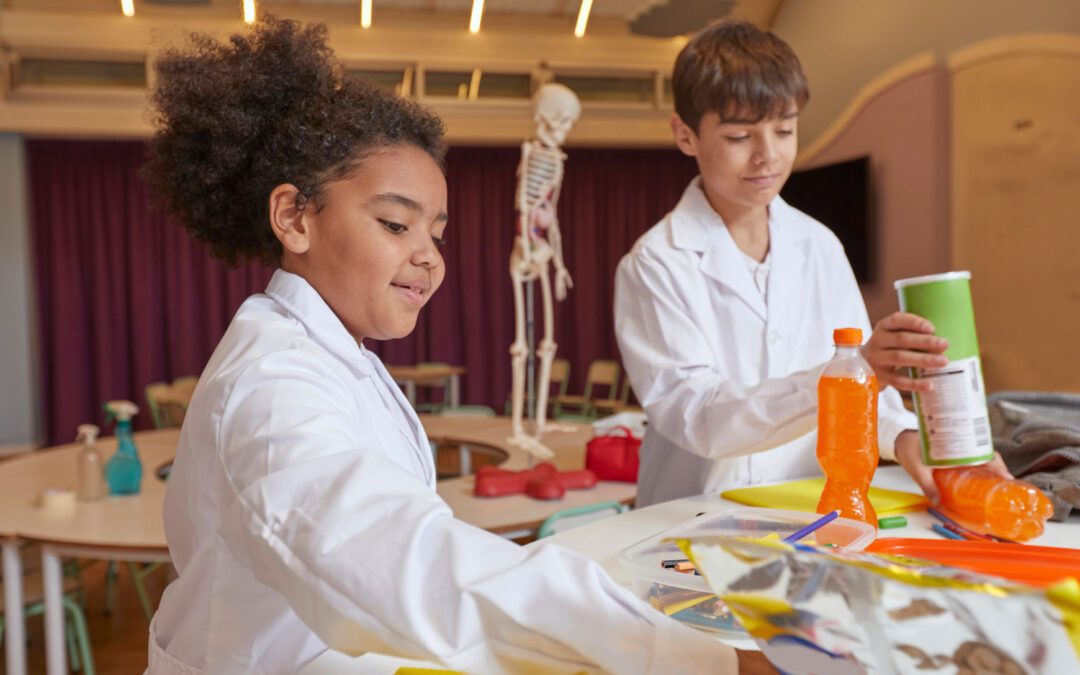With Halloween right around the corner, October is an ideal time to introduce kids to STEM activities with a spooky twist! With common pantry items and a little food coloring to fit the holiday, these two STEM experiments help illustrate density.
Gooey Green Oobleck
Oobleck, named for the sticky green substance in the Dr. Seuss book Bartholomew and the Oobleck, is a viscous mixture called a non-Newtonian fluid. Non-Newtonian fluids behave as both solids and liquids, and because of this special property, they are perfect subjects for learning about density. While cornstarch will wash out of your clothes, this is a very messy project, and food coloring may stain, so be sure to protect tabletops or conduct the experiment outside.
What You’ll Need
- Green food coloring
- Spoon
- Cornstarch
- Glass or pitcher of water
- Tray or large bowl
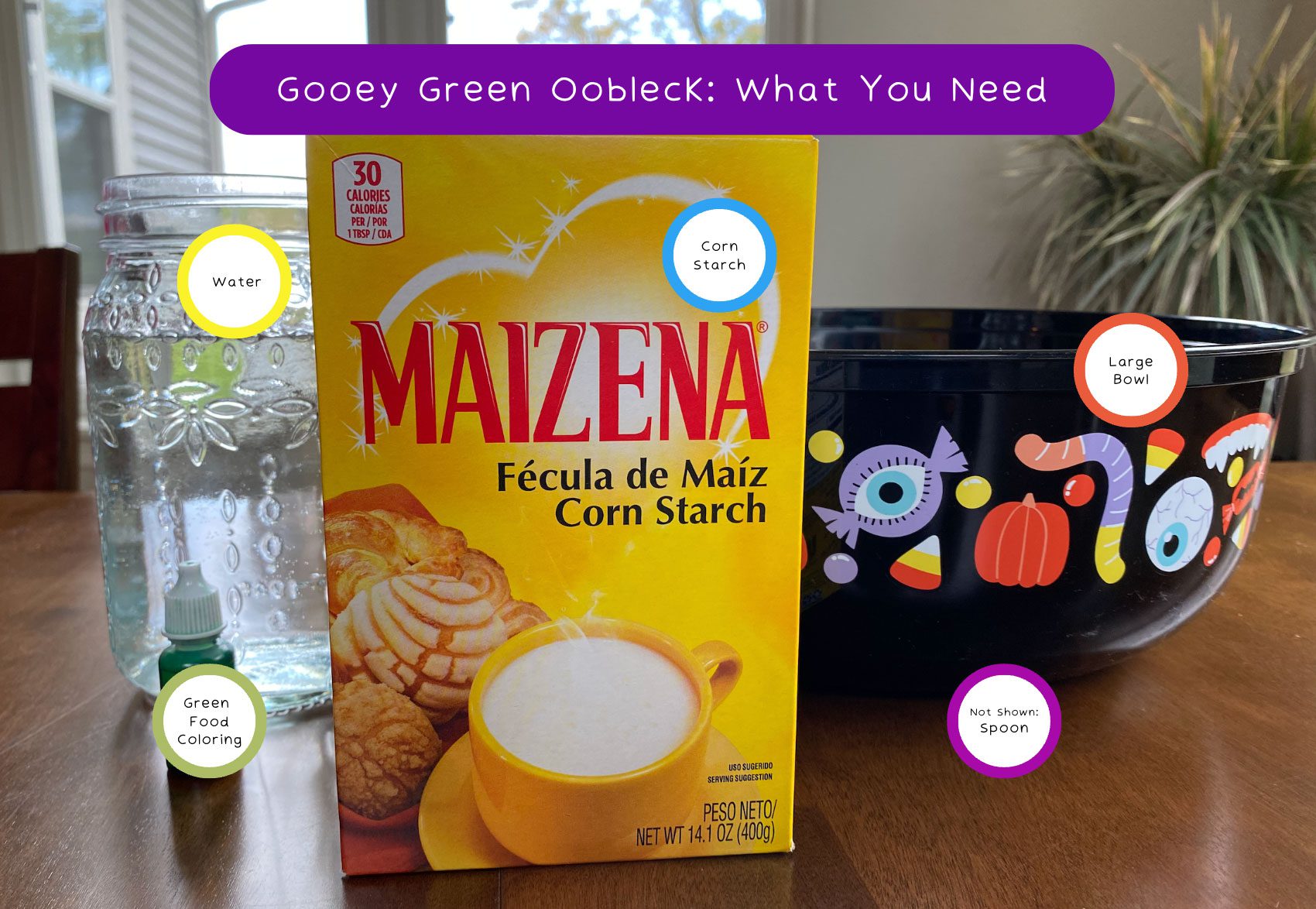
Experiment
- Add a few drops of food coloring to the water, and mix to disperse.
- In a large bowl or tray, place a heap of cornstarch (about a half cup to a cup is a good start).
- Pour water slowly over the cornstarch until a thick, viscous liquid forms.
- Invite kids to mix the oobleck with a spoon, squeeze it in their hands, and then let go to observe the oobleck’s properties.
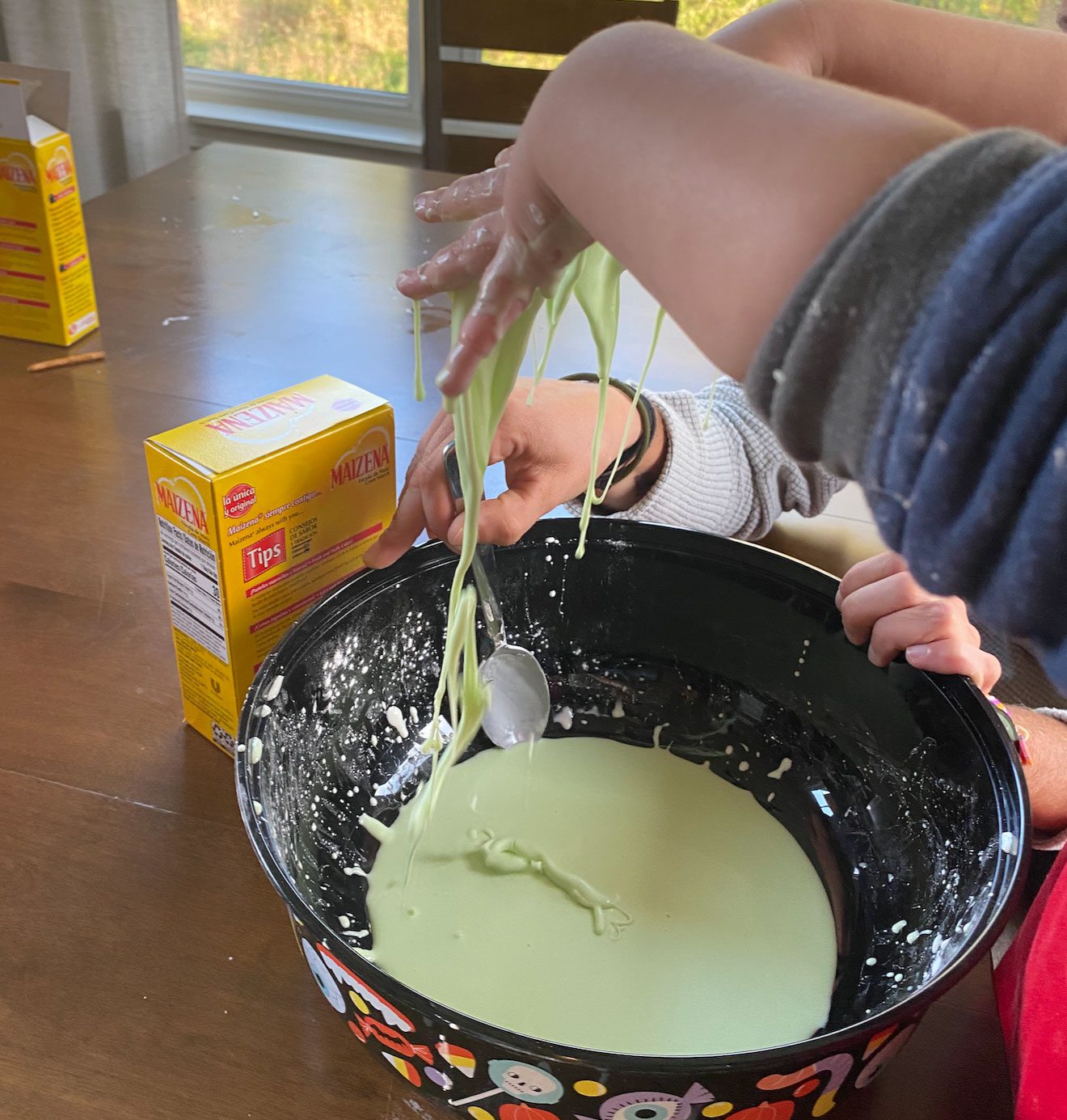
Science Concept: Non-Newtonian Fluids
To illustrate the difference between Newtonian and non-Newtonian fluids, you can repeat the step of mixing food coloring into water. Because food coloring is water soluble, the two substances mix, with the food coloring binding to the water molecules. The cornstarch in the oobleck, however, is not water soluble. While they are too small to see, the cornstarch particles are suspended in the water, slipping past each other. When force is added, such as with the squeeze of a hand, the cornstarch particles are pushed together, acting (temporarily) as a solid. When the pressure is released, the particles again disperse in the water, and the oobleck acts as a liquid.
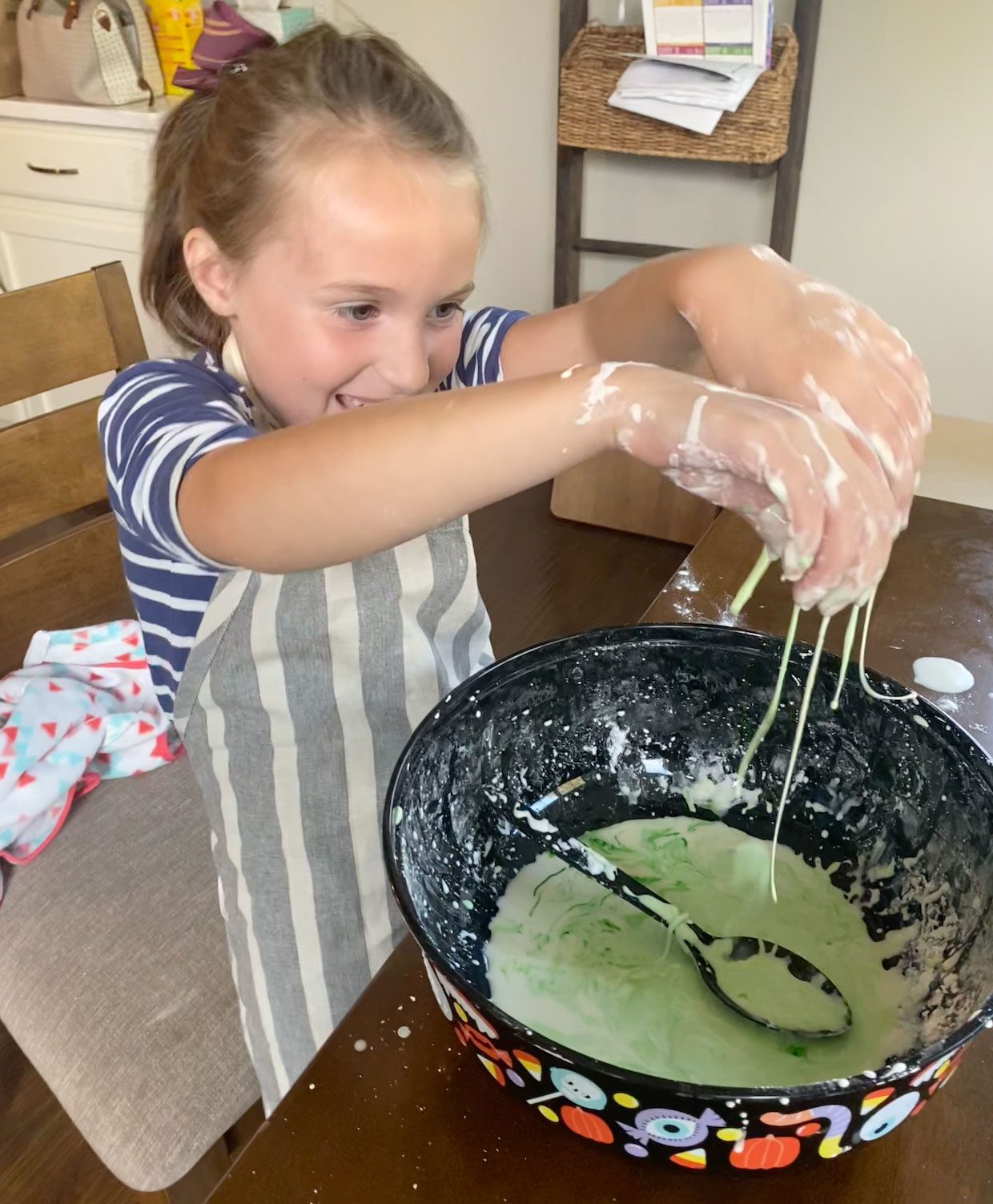
Discussion Questions
- Why do you think the oobleck behaves the way it does?
- How is the water and food coloring mixture different from the oobleck?
- What do you think would happen if you walked on the oobleck?
- If you stick the palm of your hand into the oobleck, how easy is it to pull it out again?
- Can you think of other substances that can be both liquid and solid? (Hint: paint, ketchup, and honey are three others.)
Spooky Lava Lamp
Lava lamps might be a thing of the past, but their mesmerizing interaction between oil and water can teach kids a timeless lesson about liquid density. While this experiment can be conducted any time of year, with plastic spiders and a flashlight, you can add a little Halloween intrigue.
What You’ll Need
*Note: We used a 12 oz canning jar in our experiment. The amounts written below are for a 12 oz jar. If using a smaller or larger jar, make sure the oil to water ratio is 4:1.
- 1 jar or beaker
- 1 cup oil, your choice
- ¼ cup water
- Water-soluble food coloring
- Alka-Seltzer tablets (at least one tablet; our kiddos enjoyed having more than one tablet)
- Plastic spiders or insects (optional)
- Flashlight (optional)
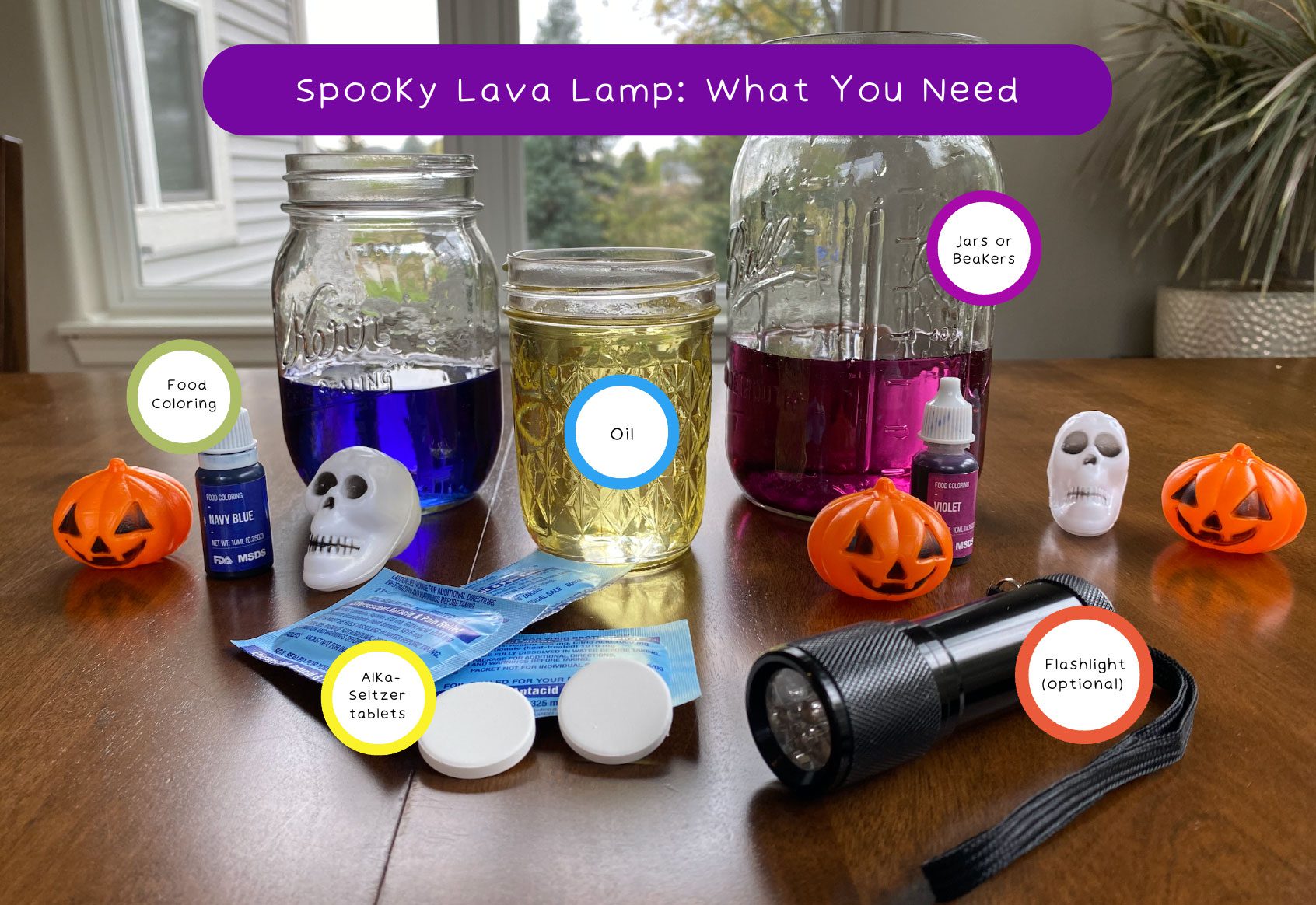
Experiment
- Fill the jar (or beaker) most of the way with your choice of oil.
- Add the water to the oil. Notice how oil floats and water sinks in the jar.
- Add a few drops of your chosen food coloring. Watch as it sinks, coloring the water at the jar’s bottom.
- Break an Alka-Seltzer tablet into a few small pieces, and drop them in the jar one at a time. Add another piece of the tablet or an additional tablet to repeat.
- For extra spooky fun, turn on the flashlight, turn out the lights, and shine the flashlight behind the jar to see the reaction. Add a few spiders for Halloween flair!
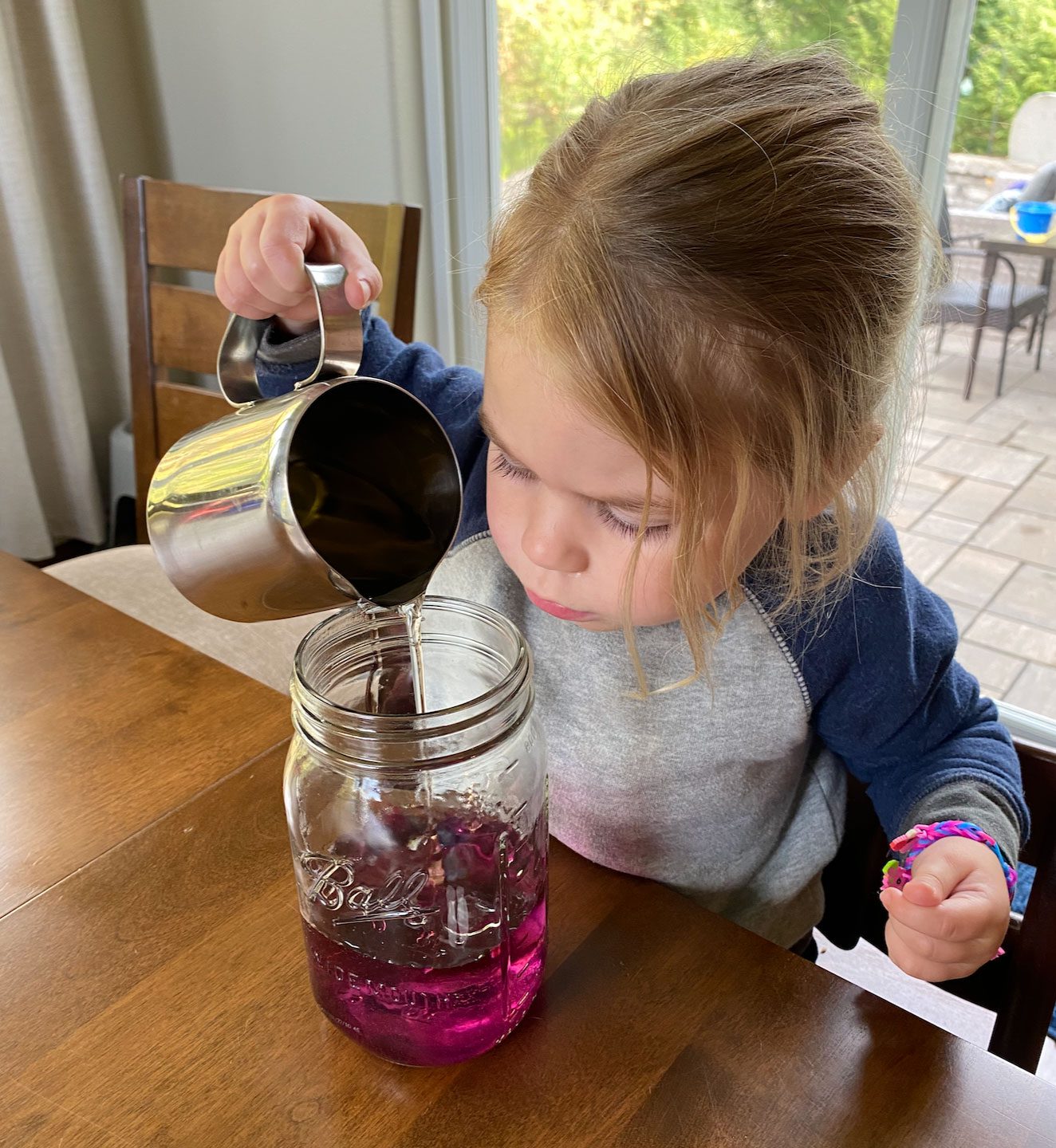
Science Concept: Liquid Density
Liquids have different densities, and oil and water are great examples. The two don’t mix, and because oil is less dense than water, it will float on the surface of the water. When the antacid tablets disperse and react with the water, creating carbon dioxide, the air that floats to the top of the jar takes some water with it. When the bubbles reach the surface of the oil and pop, the blobs of water descend again.
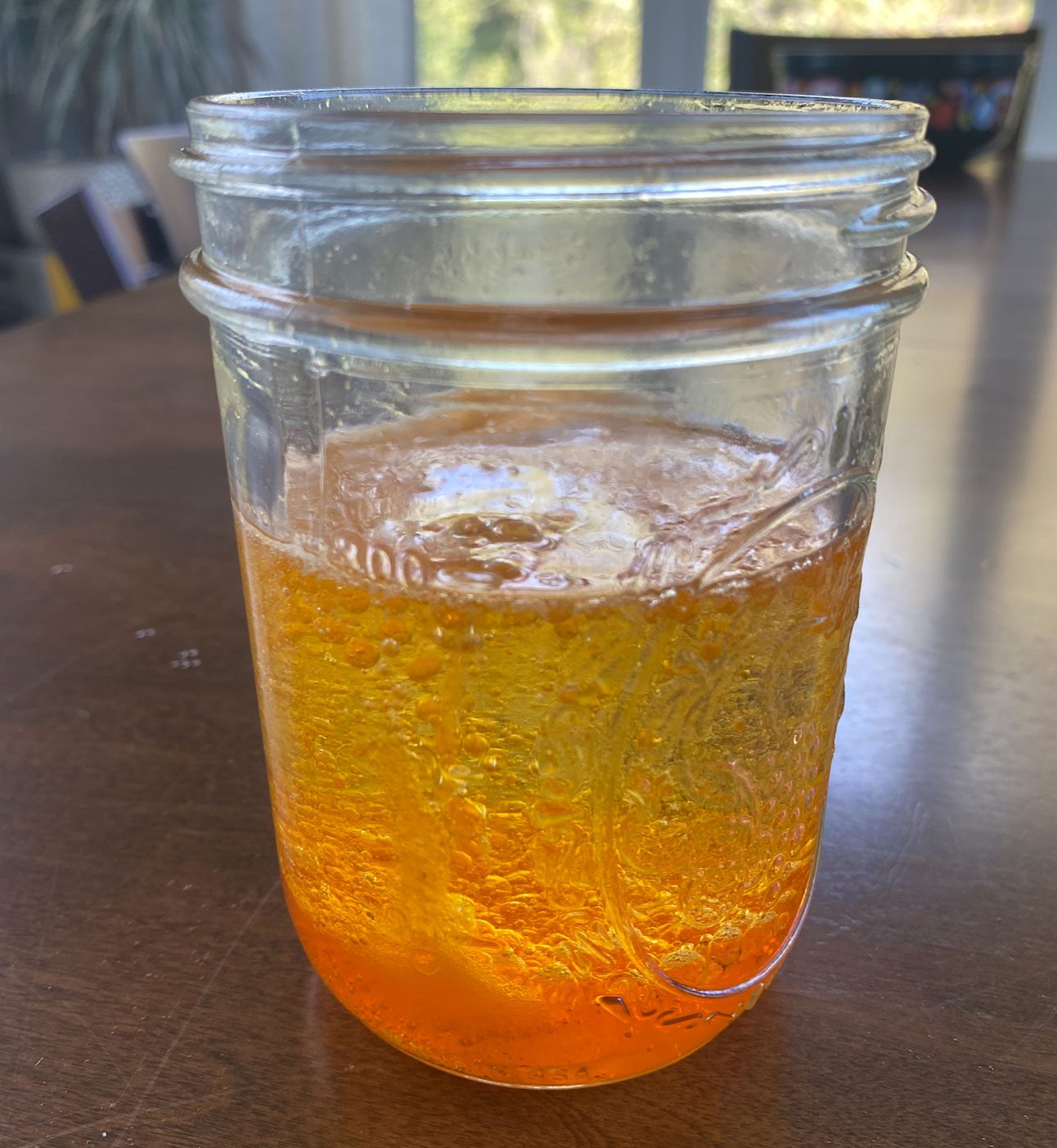
Discussion Questions
- What happened when the food coloring was added to the water?
- Why do you think the oil stayed on top of the water?
- Describe the reaction when the tablets were placed in the water. What do you think caused the bubbles? Why did the colored liquid sink to the bottom again?
Holidays like Halloween offer ample opportunities to add novelty to simple experiments, getting kids interested in learning more about science. But whatever the season, introducing STEM concepts can help your child become more engaged learners and prepared to tackle more complex tasks as they grow. Sign up your kids from toddler to age ten for one of STEMful’s camps, afterschool programs, or classes, to sprout their curiosity and foster a lifelong love of learning.
- H. Joachim Schlichting, “Ketchup Is Not Just a Condiment, It Is Also a Non-Newtonian Fluid,” Scientific American, March 12, 2021, https://www.scientificamerican.com/article/ketchup-is-not-just-a-condiment-it-is-also-a-non-newtonian-fluid/.

